Honoring one of Nepal’s finest: Dr. Mahesh Shah.
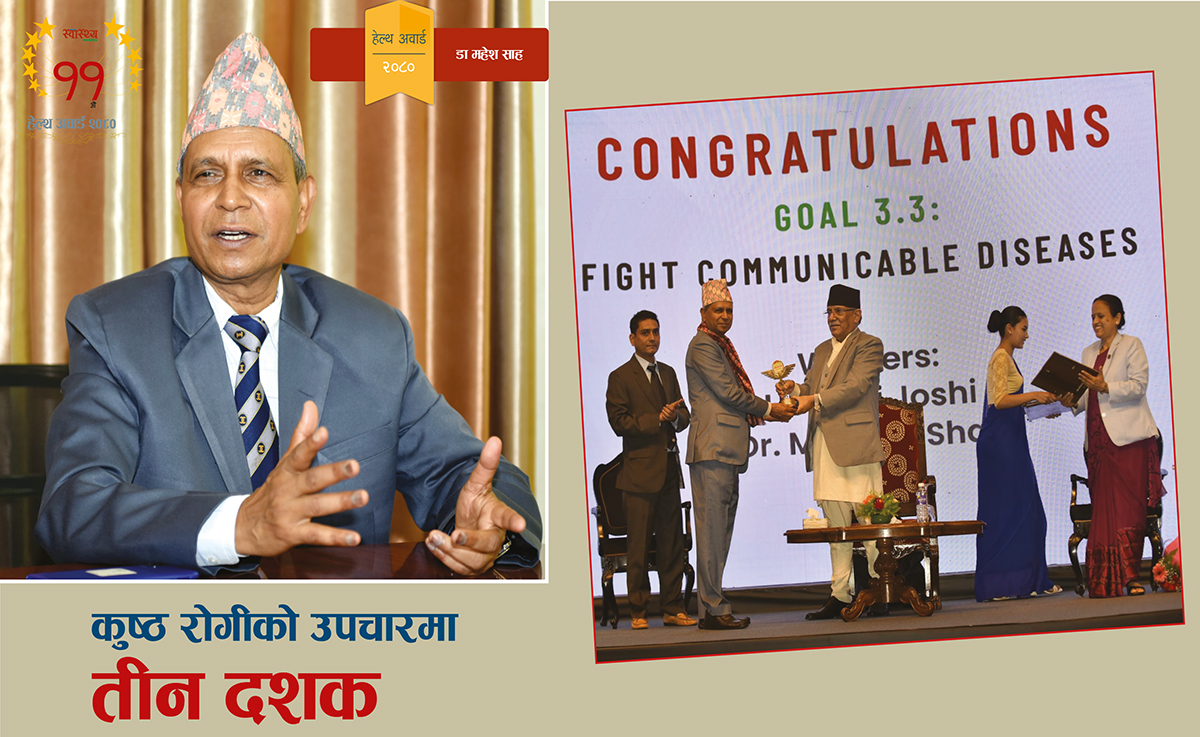
There was a time where Dr. Mahesh Shah couldn’t see a path to become a doctor. In 1971 AD, having finished his Intermediate of Science (I.Sc.) with a focus on Biology, Dr. Shah applied to study MBBS (Bachelors of Medicine, Bachelors of Surgery). In the same year, the Government of Nepal introduced major reforms to the existing education system and announced The National Education System Plan for 1971-76 AD. A major part of these reforms was the grading and examination systems and while these were much needed changes, they didn’t benefit everyone. The changes meant that, people like Dr. Shah who had finished their diplomas under the old education system, would be at an academic disadvantage than to those we studied under the new education system. Because of this Dr. Shah nearly didn’t make it out as a doctor and we nearly lost one of the finest Leprologist of the country.
Early Life
Dr. Shah hasn’t had a lot of nearly moments in his life. Born in 1955 AD in Dhanusha, Dr. Shah is the youngest of three brothers. By the time, he was in secondary school, both of his brothers had set out to study engineering. Growing up, Dr. Shah recalls that he wasn’t particularly interested in medical sciences, but would always look up to doctors. And while his parents always wanted him to be a doctor, it was perhaps another incident that pushed Dr. Shah to become one. As it happened, one of his neighbors studied MBBS in India and every time they would pass through, Dr. Shah would always take a moment to admire the man in a suit with a briefcase in hands. Perhaps it was this admiration, or the man’s exuberance and confidence, by the time Dr. Shah had finished his School Leaving Certificate (SLC) exams, he knew he wanted to become a doctor.
In 1969, Dr. Shah left for Kathmandu and joined I.Sc. In Biology. Coming from a Maithali background, he had troubles grasping a syllabus that was completely in English. Days turned into weeks, weeks turned into month, and a complex language was nothing more than a collection of words. In 1971, Dr. Shah finished I.Sc. with flying colors. A change in the education system meant that Dr.Shah fell short of the requirement of an MBBS degree and joined B.Sc (Bachelor of Science). Despite excelling in his studies, Dr. Shah could never quite erase his thirst to become a doctor.
Flailing Hope
In 1975, three months into his Msc. In Botany (Masters of Science), Dr. Shah, having the realization that this wasn’t what he wanted, dropped out of University. Fast forward 6-months and Dr. Shah decided to join a technical course to become a Health Assistant. Even though Dr. Shah’s qualification at the time far exceeded the requirements to study Health Assistant, he knew that was what he wanted. In 2 years, Dr. Shah finished his studies and was sent to Kailali District Health Post for temporary posting. Few months into his job, he was made a permanent staff of the then His Majesty’s Government of Nepal, and was sent to Banke.
Despite a stable and respectable job, Dr. Shah didn’t quite feel at home. Despite an amazing work environment, Dr. Shah handed in his resignation and left for Kathmandu.
“I couldn’t stay there. Even though the work environment was really great, I couldn’t. I never wanted a job, all I wanted was to study MBBS and I knew I wouldn’t get that by staying there.”
Dr. Shah then joined Teaching Hospital as an Anesthetic Assistant and started working inside the operation theatre. In between surgeries, Dr. Shah would often wonder if this was the right path. With MBBS nowhere in his sights, the dream of being a doctor was quickly fading away in the bright lights of the operation theatre.
Nepal to Russia
In 1985 AD, the Russian Culture Exchange announced a scholarship program for MBBS students and Dr. Shah was amongst the few participants selected to take part in the exchange. Finally, at 29 years of age, there was a light at the end of the tunnel. Dr. Shah stepped onto the flight to Russia and never looked back.
It’s not that his days to come were void of struggles, in fact, there were many, the entire course was taught in Russian and he didn’t have much working knowledge of it, the challenging climate of Taskan, but all the challenges seemed much more conquerable now that he was on his way to become a doctor.
“I struggled with Russian in my first year at Taskan. Even though they (Russian Cultural Exchange Center) had given us a 1 year course in Russian, it was quite different using all of it in a University setting. We (referring to other overseas students) would often go back to our dorms and translate the day’s notes using the dictionary. There were many a days where we slept at 2 AM just translating the day’s notes.”
Similar to his struggles with English, Dr. Shah’s struggles with Russian didn’t last long. By the time he was in his second semester, he was amongst the best students of the class and his clinical background as a Health Assistant helped him immensely.
Back a Doctor
“After six years in Russia, Dr. Shah came back to Nepal in 1992 A.D, adding the Dr. title to his name. The next step, was to become one. In his early years, he would often visit the Ministry of Health to see if there were any job opportunities, but all they could offer was probationary jobs and voluntary positions, and even for those, he had to wait forever.
It was during one of these days in waiting that he met Dr. Birendra Kumar Bista. A friend of his eldest brother, Dr. Bista had just left Anandaban Hospital to take care of his then sick mother. Dr. Shah talked about his struggles with Dr. Bista and Dr. Bista recommended him to Anandaban Hospital. The very same day Dr. Shah met with Dr. Ruth Butlin, then Medical Superintendent of Anandaban Hospital.
“The first question Dr. Ruth Butlin ever asked me was how would you feel about working with people affected by Leprosy? When I said, I had no problems with it, she asked me, How would your family members feel?” At the time, in India, doctors working with Leprosy patients were often discriminated.
Life at Anandaban
Since 1992 till Now, Dr. Shah has spent 31 years at Anandaban Hospital. From then to now, Dr. Shah has changed with the changing landscape of Anandaban Hospital. Starting from a team of 5 to leading a team of nearly 100 staffs, he himself has grown with Anandaban Hospital. He has seen thousands of patients, transformed hundreds of livelihoods, and helped not just Anandaban Hospital, but The Leprosy Mission Nepal grow into the organization it is today. But despite the many changes around him and a few changes he brought, Dr. Shah feels like it was yesterday that he walked into Anandaban Hospital.
“What is happiness? What is satisfaction? There has been no greater happiness in my life then seeing my patients do well in theirs. Some of my patients come visit me from around the world, others I see regularly, some talk to me when they see me on the street, others don’t, but none of that matters to me. I am happy to be an observer in my patient’s life, just passing through their moments of happiness, present in the moment of need.”
*Dr. Mahesh Shah is a renowned leprosy specialist in Nepal. His works extend far beyond clinical care. He has been equally active in research and social rehabilitation of his patients. He was awarded the Senior Research Award from the Government of Nepal in 2016 and Swasthya Khabar Health Award in 2023 for his contribution towards Sustainable Development Goals 3: Good Health and Well-Being.
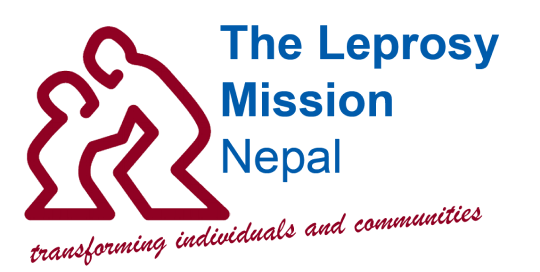
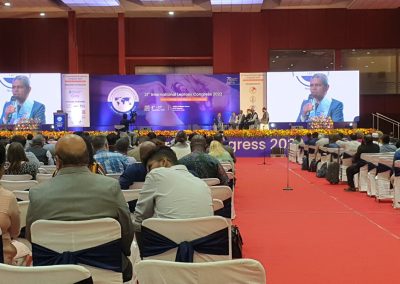
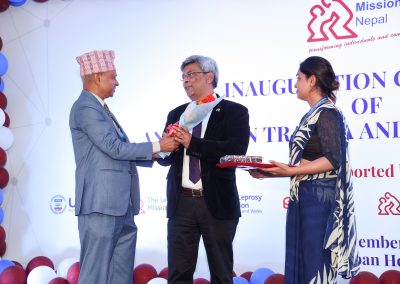
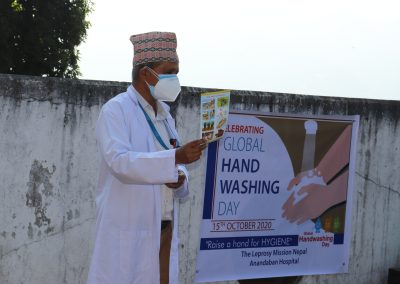
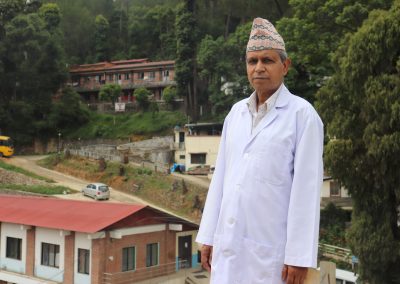
Recent Comments